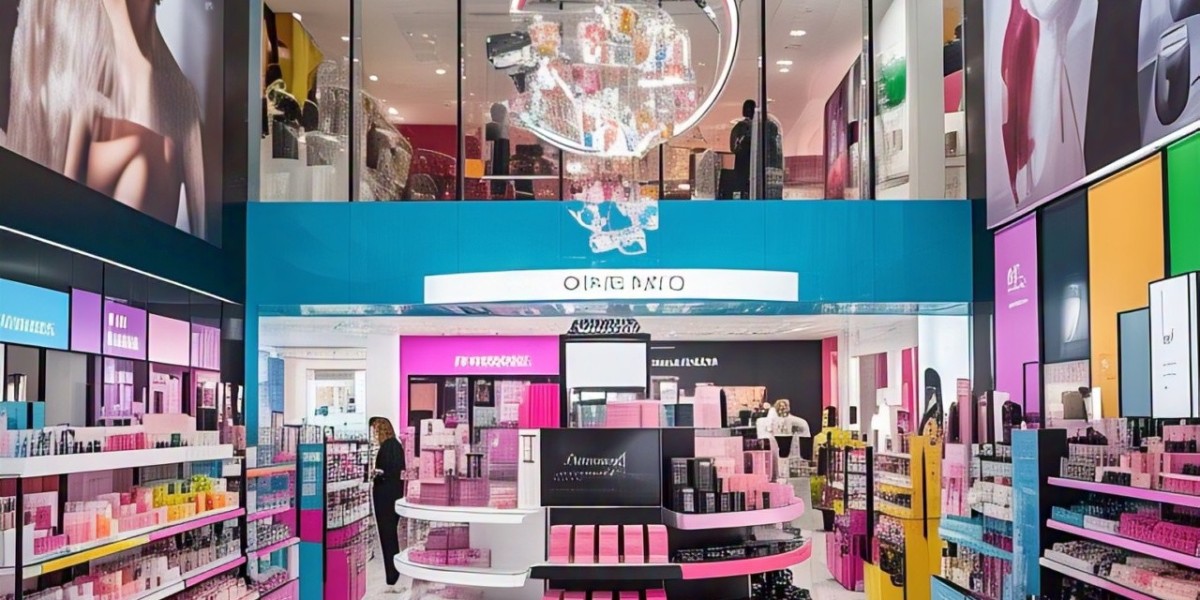United States Cosmetics Market Size and Share Analysis – Growth Trends and Forecast Report 2025–2033
Market Overview
The United States Cosmetics Market is projected to grow from US$ 97.89 Billion in 2024 to approximately US$ 149.53 Billion by 2033, expanding at a robust CAGR of 4.82% during 2025–2033. This growth is being driven by several dynamic forces including rising demand for premium beauty products, increased skincare awareness, the green cosmetics movement, and the expansion of digital commerce channels.
Consumers in the U.S. are shifting their preferences towards more sustainable, inclusive, and personalized cosmetic solutions, encouraging companies to innovate in formulations, packaging, and marketing strategies. Moreover, the widespread use of social media and influencer-driven marketing has transformed how consumers discover and engage with cosmetic brands.
Definition and Importance of Cosmetics
Cosmetics are products designed to enhance or maintain physical appearance and hygiene. These include a vast array of skincare, makeup, haircare, fragrances, and personal care products. In the U.S., cosmetics are essential to consumers' self-care routines, reflecting their individuality, confidence, and cultural trends.
The market caters to diverse demographics with varying needs based on age, skin tone, gender, and lifestyle. In professional industries such as entertainment, fashion, and media, cosmetics play an integral role. The current focus on natural ingredients, sustainability, and technological innovation has redefined the sector’s growth trajectory.
Key Market Drivers
1. Rising Demand for Clean, Sustainable, and Transparent Beauty
A growing number of U.S. consumers are actively avoiding harmful ingredients and opting for products labeled "clean," "vegan," or "cruelty-free." This trend is especially prominent among millennials and Gen Z, 43% of whom prioritize natural skincare compared to 31% of the general population.
This demand has pushed brands to reformulate products using organic ingredients, biodegradable packaging, and ethical sourcing practices. Regulatory compliance and clear ingredient labeling have become essential to gain consumer trust.
2. Influence of Social Media and Digital Platforms
Social media platforms like Instagram, TikTok, and YouTube have revolutionized cosmetic marketing. Influencers, beauty vloggers, and online reviews significantly influence purchasing decisions. Consumers often rely on tutorials, before-after comparisons, and real-time reviews to evaluate products.
E-commerce growth has further enhanced accessibility. With virtual try-ons, AI-powered recommendations, and direct-to-consumer models, brands can connect with audiences beyond traditional retail. As per Tinuiti (June 2023), 37% of beauty shoppers in the U.S. start their product searches on Amazon, highlighting the growing dominance of online platforms.
3. Personalization and Inclusive Product Lines
Consumers are no longer satisfied with generic beauty products. They seek customized and inclusive solutions tailored to their unique skin tones, hair types, and personal concerns. The surge in shade diversity, bespoke serums, and AI-backed skincare analysis has redefined the industry.
Brands like Fenty Beauty and others have set new standards with expansive shade ranges and products for underserved demographics. This inclusivity builds deeper emotional connections, improves brand loyalty, and drives long-term customer retention.
Related Report
Market Challenges
1. Regulatory and Compliance Complexities
Cosmetic manufacturers must adhere to strict standards set by the FDA and other regulatory agencies. Labels such as “natural” or “organic” require proper substantiation to avoid legal challenges. As the market moves towards transparency, companies must ensure accurate ingredient claims, safety testing, and ethical certifications, which increase both compliance costs and product development time.
2. Market Saturation and Fierce Competition
The U.S. cosmetics industry is highly fragmented and competitive, with large multinational giants and nimble indie brands vying for attention. While established companies have an advantage with massive marketing budgets and retail presence, new entrants struggle to gain shelf space and consumer mindshare.
To thrive, brands must continuously innovate, leverage social proof, and emphasize uniqueness through niche formulations, personalized services, or cause-driven branding.
Segment-Specific Analysis
United States Hair Care Products Market
Hair care in the U.S. is experiencing strong growth as consumers seek natural, functional, and personalized products. From organic oils to sulfate-free shampoos, the demand for hair health solutions tailored to curly, color-treated, or damaged hair is rising. Brands like Aeterna, which launched its Made in Italy natural haircare in July 2024, are leveraging authenticity and artisanal roots to capture market share.
United States Makeup and Color Cosmetics Market
The makeup and color cosmetics segment is booming, driven by evolving beauty standards and social trends. Consumers demand high-performance products with skincare benefits, longer wear, and inclusive shade ranges. Products such as foundation, lipsticks, eyeshadows, and blushes remain staples. Influencer-led brand launches and "clean makeup" are key growth areas.
United States Women’s Cosmetics Market
Women dominate the U.S. cosmetics market with rising interest in anti-aging, hydration, sun protection, and natural beauty. Awareness of clean ingredients and the impact of cosmetics on skin health is driving demand for transparent and high-quality products. Brands offering personalized skincare routines, subscription services, and dermatologist-backed products are thriving.
United States Pharmacies Cosmetics Market
Pharmacy-based cosmetic sales are growing steadily as pharmacies become destinations for both wellness and beauty. Consumers appreciate the convenience, credibility, and dermatologist-approved options available at drugstores. Premium cosmetic offerings and natural brands in pharmacies are tapping into the health-conscious shopper demographic.
Market Segmentation
By Product Types
- Skin and Sun Care Products
- Hair Care Products
- Deodorants and Fragrances
- Makeup and Color Cosmetics
- Others
By Gender
- Men
- Women
- Unisex
By Distribution Channels
- Supermarkets/Hypermarkets
- Specialty Stores
- Pharmacies
- Online Sales
- Others
Leading Companies Covered
- Coty Inc.
- Procter & Gamble
- The Estée Lauder Companies Inc.
- Colgate-Palmolive Company
- Johnson & Johnson Services Inc.
- Revlon Inc.
- Mary Kay Inc.
Each company is analyzed through:
- Overview
- Recent Developments
- Revenue Analysis
Key Report Insights
- Base Year: 2024
- Historical Period: 2020–2024
- Forecast Period: 2025–2033
- Format: PDF + Excel (Custom formats available)
- Customization Scope: Up to 20% free
- Post-Sale Support: 1-year analyst support
Key Questions Answered
- What is the projected size of the U.S. cosmetics market by 2033?
- What is the forecast CAGR from 2025–2033?
- How is the clean beauty movement reshaping the market?
- Which product categories are growing the fastest?
- What roles do personalization and inclusivity play?
- How are regulatory hurdles affecting cosmetic companies?
- Which distribution channels are gaining prominence?
- Who are the key players and their strategic developments?
- How are pharmacies and e-commerce platforms impacting sales?
Request Sample / Customization / Contact Us
? USA: +1-678-302-0700
? India: +91-120-421-9822
? Email: info@renub.com
? Website: www.renub.com








